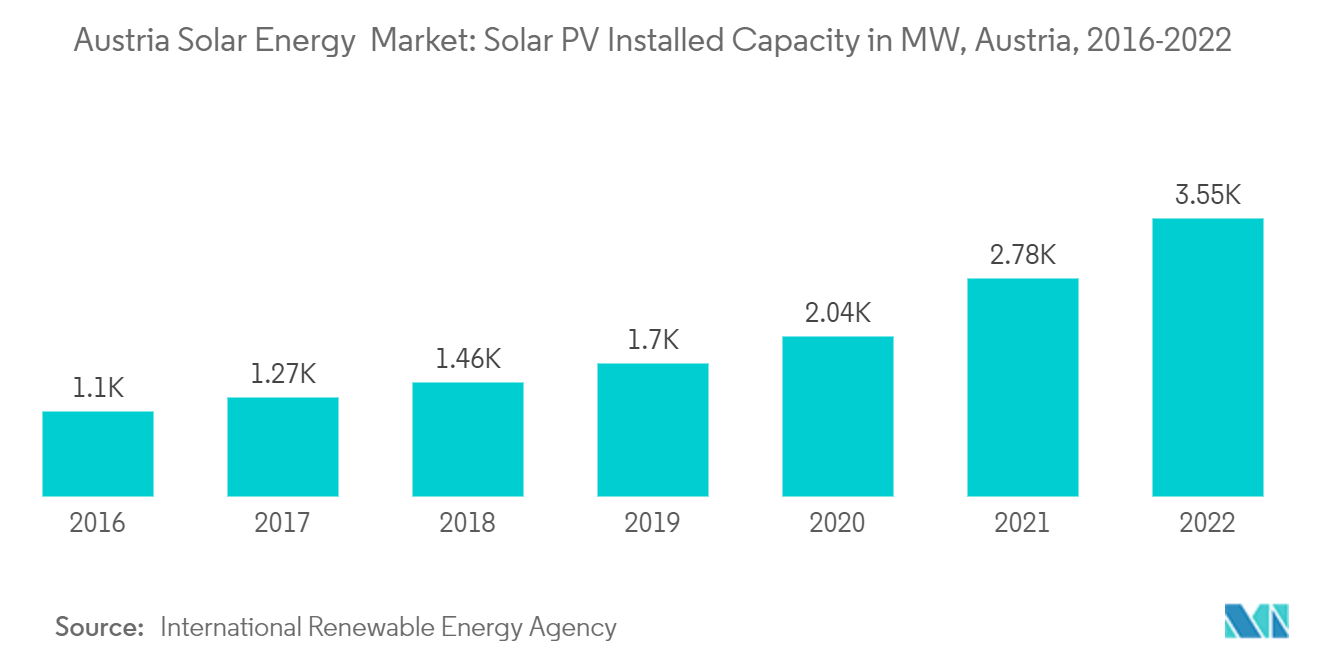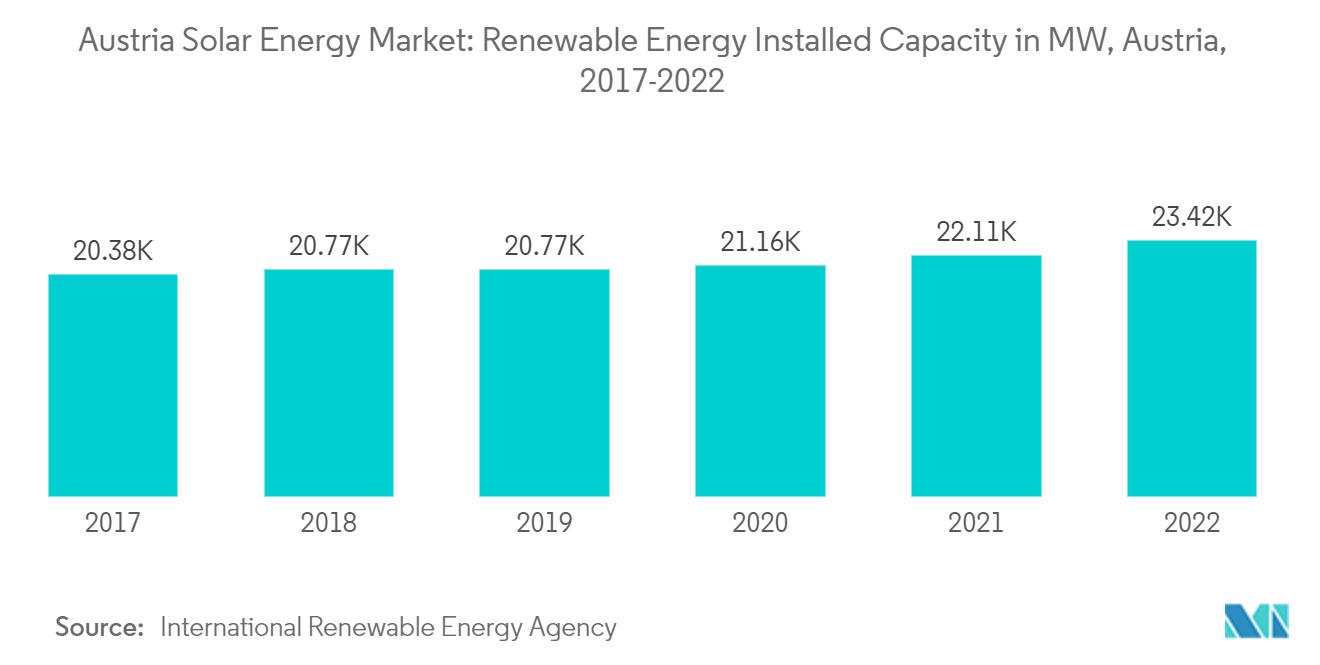Market Trends of Austria Solar Energy Industry
Solar PV Segment is Expected to Hold Significant Market Share
- Austria's solar photovoltaic is one of the significant segments in the power generation industry. As of this year, it has an installed capacity of around 3.5 GW. With concern regarding climatic change and rising air pollution, the government had a roadmap to increase the share of renewable energy, such as solar, in its energy mix during the study period.
- Austria's objective for solar photovoltaic (PV) power production is 2 TWh in 2030, 3 TWh in 2040, and 5 TWh in 2050, according to the National Energy and Climate Plan. Hence, this target will likely increase the solar PV installed capacity during the forecast period.
- Solar PV deployment has expanded during the past five years as a result of feed-in tariffs and declining implementation costs. Due to its proposed 1 million photovoltaic roofing scheme, the main reasons are likely to help the country achieve carbon neutrality by 2040. As part of this ambitious target, the country pledged to source its electricity supply from renewable sources by 2030. Hence, this factor will likely boost solar PV deployment across the country.
- Furthermore, the Renewable Energy Extension Act proposed by the government is designed to push renewable energy projects substantially. An electricity generation of 27 TWh is required from renewable energy sources, out of which an additional 11 TWh is needed from solar power production to achieve the 2030 target.
- Hence, owing to these factors, the solar PV segment is likely to witness considerable growth in the Austrian solar energy market during the forecast period.

Increasing Renewable Energy Demand to Proliferate the Market
- The installation of renewable energy is increasing significantly across the country in order to reduce the emission of toxic gases into the environment. The country has targeted to meet 34% of its electricity demand from renewable by 2030.
- The total installed capacity of renewables is 23.4 GW this year. Among the renewable energy installed capacity, hydropower (14,969 MW) held the largest share, followed by wind (3,736 MW), solar (3,548 MW), and bioenergy (1,171 MW).
- The new target by Austria's government has declared restricting the use of natural gas for heating in new buildings from 2025 onward and phasing out all oil- and coal-fired heating systems by 2035. This factor is likely to increase solar thermal technologies in the coming years.
- In January 2023, the Austrian government planned to accelerate the expansion of photovoltaics with a budget of USD 647 million. The Ministry has also raised the funding budget for small-scale systems. The subsidy is focused on offering households and small-scale enterprises a solar system with an output of up to 50 kW and a grant of EUR 162-216/kW of installed output.
- In December 2022, small and medium-sized renewable energy and energy efficiency projects in Austria were funded by investments from the European Investment Bank (EIB) and RLB N-Wien. The Austrian regional bank will receive a loan from the EIB of up to EUR 108 million. It will subsequently build a credit portfolio of up to EUR 216 million for funding renewable energy projects. By 2030, the government wants to produce all of its electricity from hydroelectric, solar, and wind sources. These ambitious government objectives have increased interest in brand-new, environmentally friendly energy projects across the nation. The need for long-term, reasonably cost finance for smaller and medium-sized renewable energy and energy efficiency projects has consequently increased.
- Hence, the rising demand for renewable energy is likely to drive the market over the forecast period.


